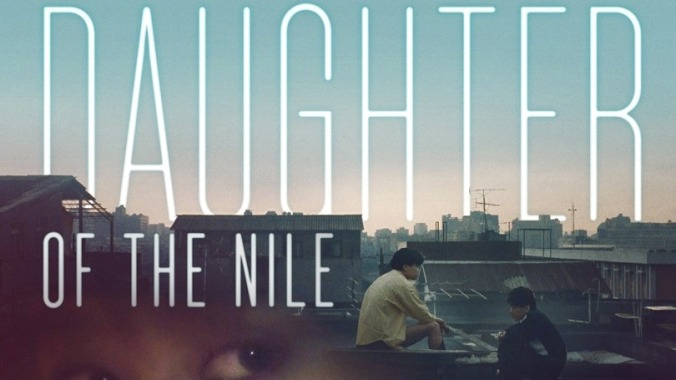What actually unfolds in Daughter Of The Nile is a shuffling and considering of possible conflicts and clashing obligations and aspirations that often come to a head off-screen. Its heroine, Hsiao-Yang (Yang Lin, an ’80s pop singer), is a 19-year-old part-time student who works at a Kentucky Fried Chicken in Taipei, coming home to tend to her little sister and her grandfather (Li Tian-Lu, the subject of Hou’s masterpiece The Puppetmaster) while her cop dad (Tsui Fu Sheng) squabbles with her small-time gangster brother (Jack Kao, later a Hou regular) in the living room; to make matters worse, Hsiao-Yang is nursing a crush on one of her brother’s good-for-nothing buddies.
In the first of several collaborations with the cinematographer Chen Huai-en, Hou gives viewers a powerful sense of the spaces that Hsiao-Yang, her family, and friends inhabit: the rickety family kitchen; the dingy classroom; the neon-glazed streets of Taipei; the heavily fogged, disco-infernal nightclubs; the Pink House kitsch coffee shop, where gangsters in dazzlingly ugly suits conspicuously puff American cigarettes. It looks spectacular in the new digital restoration, almost musical in its composition of contrasting color temperatures, wall textures, blazing signage, and hideous ’80s fashions. (One of the members of Hsiao-Fang’s gang of Mean Streets-y numbskulls even has a tasteless ride for the ages: a Miami-white Mercedes G Cabriolet with Union Jack seat covers.)
Compared to Edward Yang’s recently restored Taipei Story, which Hou co-wrote and co-starred in, or to the druggy, spellbinding ennui of Hou’s later Millennium Mambo, Daughter Of The Nile can feel insubstantial; it isn’t a mood piece, but a film best appreciated for its composed moodiness. It would take a meticulous attention to detail (probably not as meticulous as Hou’s) to notice how the angles can vary in deceptively simple, apparently identical shots, but one doesn’t need to measure minute onscreen adjustments of doorways to pick up on the melancholy uncertainty that surrounds the characters. The title, a seeming non sequitur, actually refers to Hsiao-Yang’s favorite comic book, the long-running manga Crest Of The Royal Family, about an American teenager who gets sucked back in time into ancient Egypt. It seems that when you’re lost in your own life, even your romantic fantasies end up being about dislocation.


 Keep scrolling for more great stories from The A.V. Club.
Keep scrolling for more great stories from The A.V. Club.